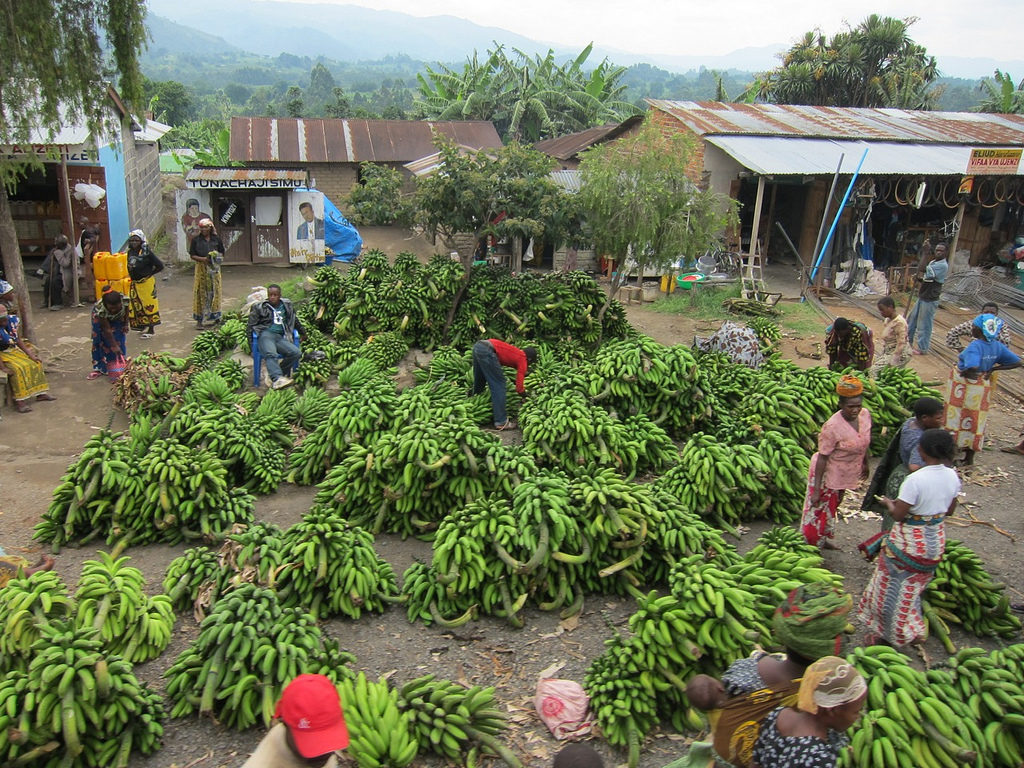With higher temperatures bananas could be grown in more areas. This means that banana production is not threatened, but there are other considerations to take into account, for example the spread of diseases.
What is going to happen to one of the world’s favourite fruits? This question is being investigated by Bioversity International scientists and partners within the framework of the CGIAR Research Programme on Climate Change, Agriculture and Food Security. They analysed the impact of climate change on banana cultivation in the book Climate Change and Food Systems: Global assessments and implications for food security and trade, published by the Food and Agriculture Organization of the United Nation (FAO) in 2015.
The scientists first analysed if and how areas suitable for banana production would change based on projected rainfall and temperature in 2030, 2050 and 2070. The results show that by 2070, land area suitable for bananas will augment by 50 per cent. Increasing annual temperatures will make conditions more favourable for banana production in the subtropics and in tropical highlands.
So, with higher temperatures bananas could be grown in more areas. This means that banana production is not threatened, but there are other considerations to take into account, according to the scientists. Higher temperatures mean greater water demand, which is projected to increase by 12 to 15 per cent. And higher temperatures may also threaten those crops, such as coffee, that are often grown with bananas. Farmers who grow banana as a secondary crop may abandon the banana when climate change makes coffee cultivation less viable.
Download the book Climate change and food systems: global assessments and implications for food security and trade
Download the chapter An assessment of global banana production and suitability under climate change scenarios
